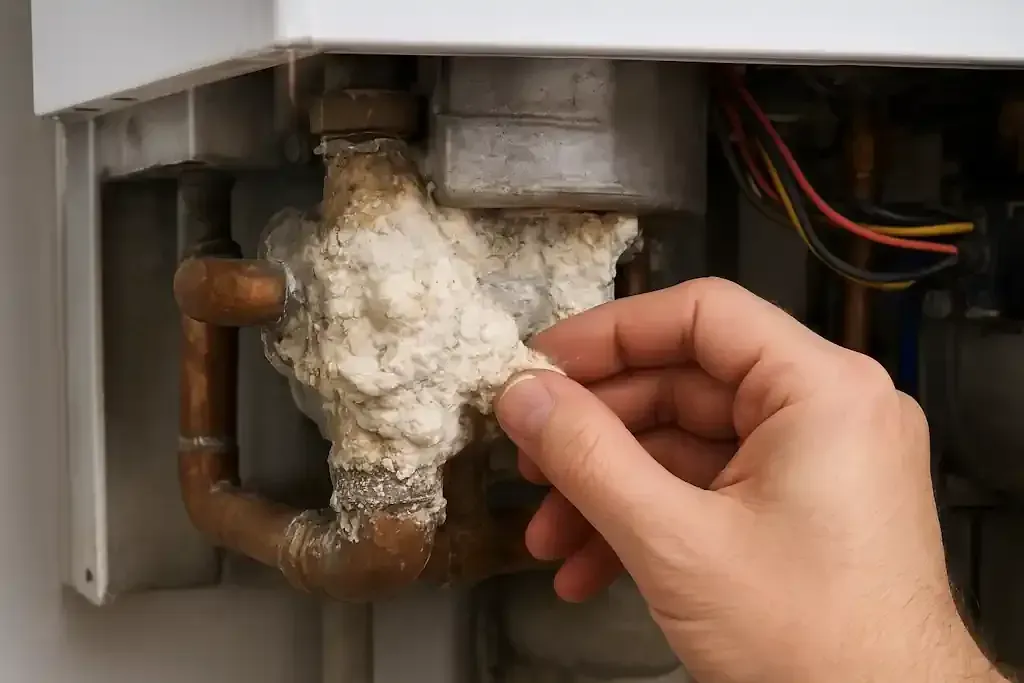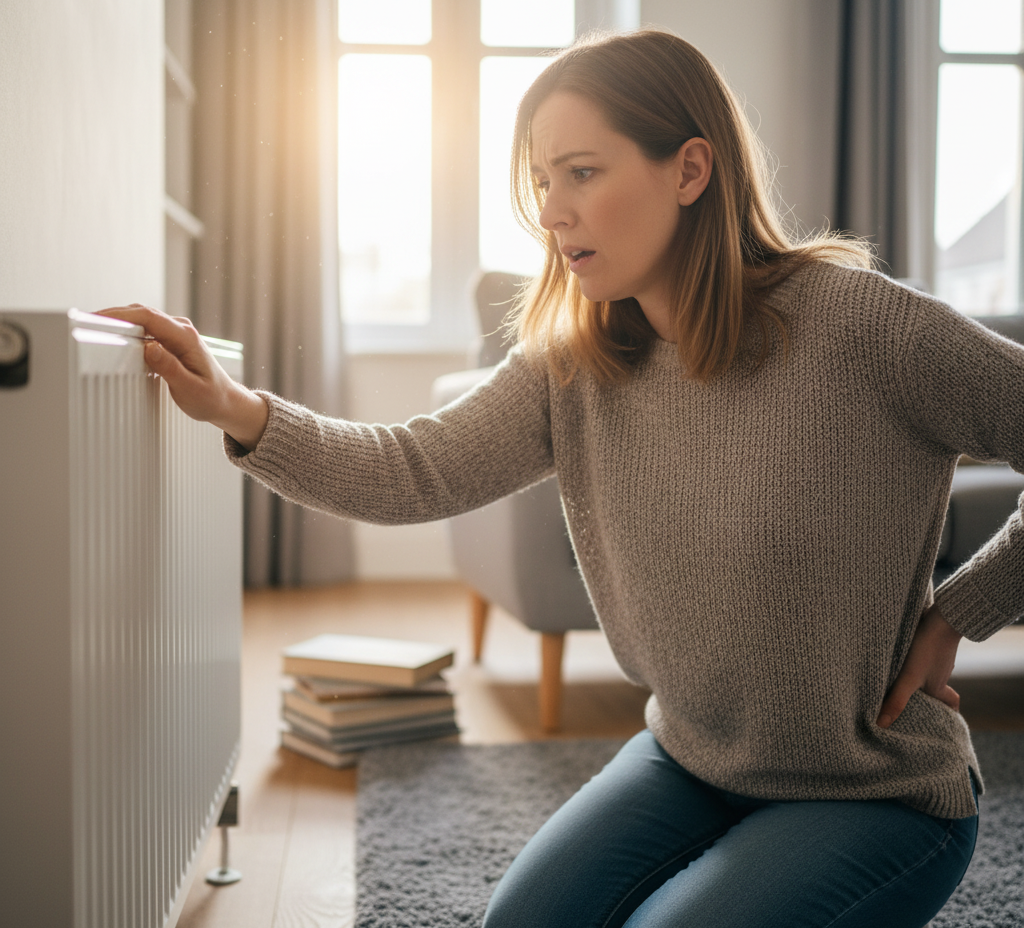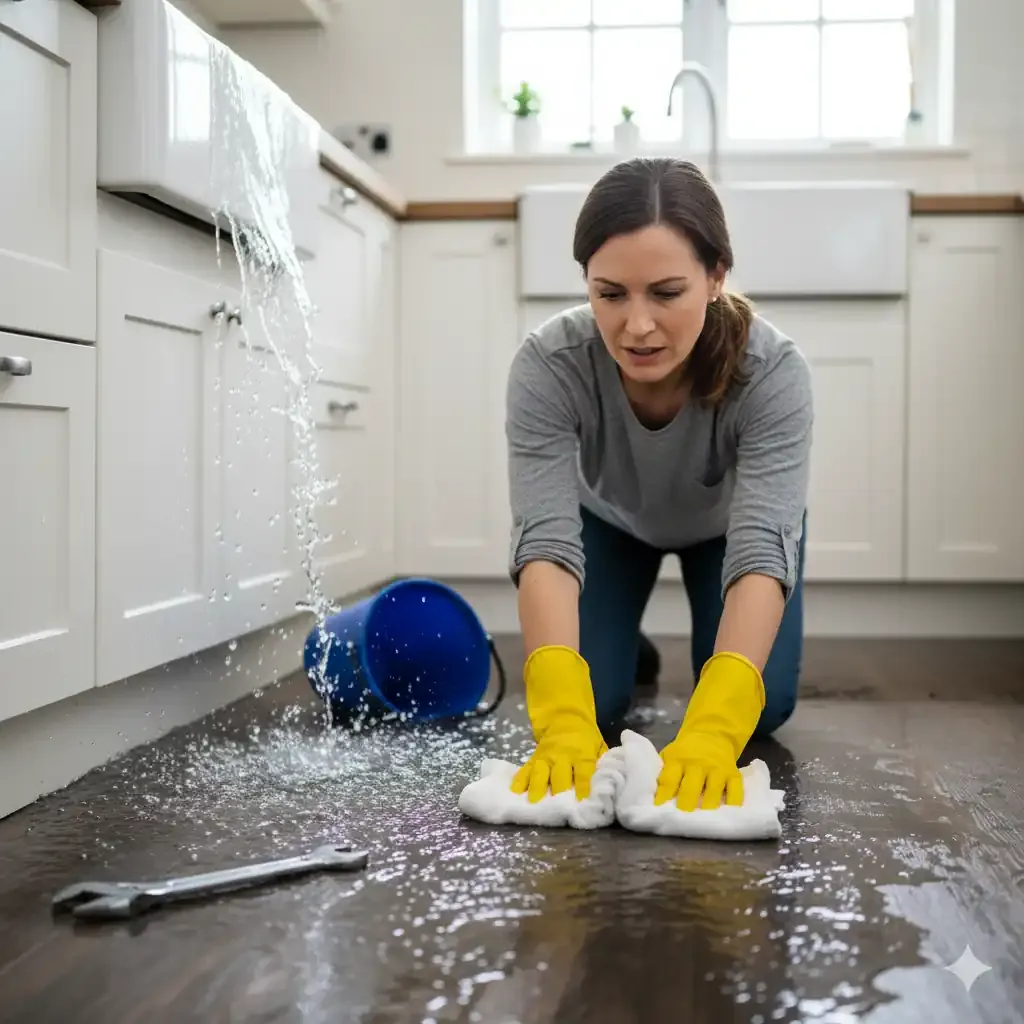How to Bleed a Radiator
How to remove the air from your radiaors by bleeding them
Do your radiators have cold spots? Are they colder at the top than the middle or the bottom? These are classic signs of radiators having air trapped inside. Air in the system prevents hot water from circulating properly, and since air rises to the top it causes the top of radiators to be colder than then should be.
Bleeding your radiators is a simple DIY process that can restore warmth to your home and make your central heating system more efficient. In this guide, we'll walk you through the steps of bleeding a radiator yourself, so you can get back to enjoying cozy comfort.
We'll tell you how to bleed a radiator successfully in seven simple steps, helping you combat the cold and improve your home’s heating efficiency. Keep reading to learn more about when you need to bleed your radiator and how you can do it yourself.
When do the radiators in my home need bleeding?
Here are some key signs that your radiator needs bleeding:
- Radiator is cold at the top - This is the most common sign that your radiator needs bleeding, which essentially means there is air that has collected in the radiator, stopping the hot water from circulating around and heating it up. The air needs to be released so your radiator can heat up effectively. Patchy warmth in your radiator is definitely a sign it needs to be checked out before it stops heating up altogether.
- Entire radiator is cold - Though this isn’t as common a sign that radiators have air trapped in them, it certainly is a sign that your radiator needs attention. Trapped air somewhere in the pipes has restricted the hot water which is meant to be flowing into the radiator (this can cause bigger problems later if it’s not sorted quickly!) You should get in touch with a heating engineer to get things up-running and toasty again.
- Radiators are making noises - Again trapped air in the heating system may cause your radiators to make gulping, gurgling and rattling noises. Whilst this could be for various reasons, it may be a sign that you need to bleed the radiator. Either way, your radiator needs to get checked to make sure the problem isn’t more sinister.
- Mould/ damp around the house - If you’ve noticed nasty damp patches or mould sneaking in on the walls of your home, particularly in rooms that aren’t used very often, this could be a sign your radiators need some attention.
What do I need to bleed my radiators?
If you plan to bleed your own radiators, you’ll need the following items:
- Radiator key
- Bucket
- Safety gloves
- Cloth/towels
Warning: The water inside the radiators can be very hot, so ensure the heating is switched off, and that the system has had time to cool. Take care not to scold yourself and wear protective gloves and clothing. Where possible, also protect your floors from the water.
How do I bleed my radiators?
Follow this simple step-by-step guide to check and bleed your radiators correctly and more importantly SAFELY:
- Turn your heating on - Turn your heating on and wait for all of the radiators in your home to warm up (the length of time may depend on how many radiators you have and the size of your home, so be sure to give yourself plenty of time).
- Identify which radiators need bleeding - This is where you carefully check each radiator to ensure it has an even temperature across the whole surface area (top, bottom and side to side). If you do find any radiators that are cold at the top or hear any strange noises, it’s a good indicator that there’s trapped air inside your heating system and that the radiator needs bleeding. Tip: We recommend wearing a thin pair of gloves when checking each radiator as they may be very hot.
- Turn off your heating and wait for the radiators to cool - Before you start bleeding any radiators in your home, you need to turn off your heating so the radiators aren’t too hot to touch. You, of course, want to avoid any nasty burns.
- Place a cloth/ towel below the radiator bleed valve - Locate the radiator bleed valve and ensure that a cloth or an old towel is placed below it to catch any water that may be released. Tip: Every radiator has a bleed valve. They’re typically located at the top corner of a radiator and look like a round hole with a square inside.
- Open the valve and release the air - If no water or air comes out when you bleed the radiator, then the valve could be blocked. Close the inlet and outlet valve at each end of the radiator, then remove the screw from the centre of the bleed valve. Insert the radiator key into the bleed valve and slowly turn it anti-clockwise. You should hear a hissing sound as the air escapes the heating system. Tip: We recommend having a bucket handy to catch any water, just in case you open the valve too far.
- Close the valve - Once the hissing sound stops and water starts to leak out, turn the key clockwise to close the valve.
- Check the boiler pressure - Repeat this process for every radiator that needs bleeding in your home. Once you’ve finished doing this, you’ll need to check the pressure of your boiler’s water pressure gauge. If the boiler pressure is too low (below 1 bar), you’ll need to repressurise the system. If the pressure is normal (between 1 and 2 bars), you can switch your heating back on and check that your radiators are now heating up as they should be.
Common questions asked
How often should you bleed a radiator?
You should check all of the radiators in your home every few of months. We recommend checking your radiators before the cold weather arrives, ensuring your heating system is running efficiently when you need it most.
Which radiator should I bleed first?
It's advisable to start with radiators downstairs and work your way upwards. You will often find that the majority of air is trapped in the radiators that are highest in the property due to the fact that air floats upwards, so you may find that the highest radiator in your house always tends to trap the most air, but this isn't necessarily always the case, so do be sure to check them all.
Can you bleed a radiator when the heating is on?
No! You must not bleed a radiator when the heating is turned on as it may be too hot to touch and hot water could spray out of it. Make sure the heating is turned off before you begin bleeding any radiator in your home. Letting out air when the pump is running will only draw more air into the system from elsewhere.
Should I let all of the water out when bleeding my radiators?
No that is not necessary, indeed releasing all of the water would stop your central heating from working due to low pressure in the system. You only need to release the air to the point where water starts to appear from the valve, as the air rises, this should ensure that the air has been released, but the water remains in the radiator so that it can continue to operate efficiently.
How do I know if bleeding my radiators has worked?
Once you’ve closed your radiator valves, it’s safe to turn your central heating and hot water back on. If you’ve been successful, your radiators should start to heat up within a few minutes of being turned on. You can also check the pressure gauge on your boiler and check that it reads between 1 and 2 bars.
Can I use automatic radiator valves to bleed my radiators?
Depending on what type of radiators you have in your home, it may be possible to bleed them automatically using an auto vent. These handy devices are attached to your radiator valves and let out air gradually over time. Helping to keep your radiators working efficiently, with an auto vent you won’t need to bleed them manually.
Still having trouble with your radiators?
Are your radiators still cold after you've bled them? Do you have noisy or banging heating pipes?
For help diagnosing and fixing the problem, call Assett Plumbing on
01604 372395 today, as fully qualified, Gas Safe registered heating engineers we can help determine the problem and get it fixed as soon as possible.
image courtesy of freepik



